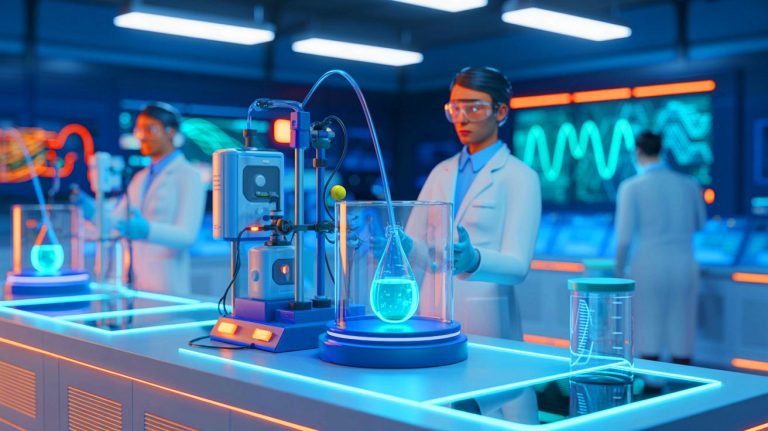| IN A NUTSHELL |
|
Hydrogen is often hailed as the future of clean energy, promising a cleaner, more sustainable world. As the energy sector grapples with reducing carbon emissions, hydrogen provides a potential solution with its ability to burn cleanly, emitting only water vapor. However, the production of hydrogen has long posed challenges, both in terms of cost and environmental impact. Recent research from the University of Adelaide has highlighted an innovative approach—using urine as a source for hydrogen production, potentially revolutionizing the way we think about energy and waste management.
Scientists Turn to an Unlikely Source: Urine
Researchers at the University of Adelaide, in collaboration with the ARC Centre of Excellence for Carbon Science and Innovation, have developed two breakthrough electrolysis systems. These systems utilize urea found in human urine and wastewater to generate hydrogen more efficiently than traditional methods. The process cuts electricity consumption by 20 to 27% compared to conventional water electrolysis, a significant reduction that could make hydrogen production more feasible and environmentally friendly.
Professor Yao Zheng, a leading figure in the research, emphasizes the environmental benefits of these systems. Not only do they significantly reduce electricity use, but they also eliminate the production of toxic by-products, instead generating harmless nitrogen gas. Should these systems be scaled up, they could pave the way for more sustainable hydrogen production, offering a compelling alternative to the environmentally detrimental gray hydrogen derived from fossil fuels.
From Lab-Made Urea to Real Human Waste
The first system developed by the researchers employs a membrane-free design using a copper-based catalyst and pure urea. However, pure urea is typically manufactured via the Haber-Bosch process, known for its high energy consumption and CO₂ emissions. Recognizing this limitation, the team designed a second system that utilizes actual urine, a more sustainable and readily available source of urea.
Professor Zheng acknowledges the need for hydrogen production methods that are both cost-effective and carbon-neutral. By leveraging human urine as a green source of urea, the researchers have addressed a major challenge in the hydrogen production process. This not only reduces reliance on energy-intensive synthetic processes but also transforms waste into a valuable resource, aligning with broader sustainability goals.
Dealing with Chlorine Corrosion in Urine
While urine presents a promising source for urea, it also introduces challenges, particularly the presence of chloride ions. During electrolysis, these ions can lead to unwanted chemical reactions, producing chlorine gas that corrodes the system’s anode over time. This issue posed a significant hurdle for researchers aiming to develop a durable electrolysis system.
To overcome this, the research team implemented a chlorine-mediated oxidation mechanism. This innovative approach redirects the reaction pathway using platinum-based catalysts supported on carbon, preventing corrosion and ensuring efficient hydrogen production. By effectively managing the chloride ions, the system maintains its integrity and efficiency, highlighting the researchers’ ingenuity in tackling complex chemical challenges.
Toward Sustainable, Low-Cost Hydrogen
While the use of platinum in the system is effective, its high cost and scarcity present challenges for widespread adoption. As a result, the research team is now focusing on developing carbon-supported, non-precious metal catalysts. This move aims to further reduce costs and enhance the scalability of the technology, making it accessible for broader application.
The ultimate goal is to develop full-scale membrane-free systems capable of recovering green hydrogen while remediating nitrogen-rich wastewater. This dual benefit underscores the potential of the technology to contribute to sustainable energy solutions and effective waste management. The ongoing research, published in renowned scientific journals such as Angewandte Chemie International Edition and Nature Communications, continues to push the boundaries of what is possible in the field of clean energy.
As the world seeks sustainable energy solutions, the innovative use of urine for hydrogen production presents a fascinating and practical development. By addressing both the environmental impact of hydrogen production and the challenges of waste management, this research offers a glimpse into a future where energy and waste are managed synergistically. How might further advancements in this field reshape our approach to sustainable energy and resource management?
Did you like it? 4.4/5 (22)









Wow, I never knew pee could be so powerful! 🚽💡
How does this technology compare in cost to traditional hydrogen production methods?
Thank you for sharing such an innovative approach to sustainable energy!
Urine luck if you invested in hydrogen tech! 😄
How scalable is this urine-based hydrogen production?
Can’t believe it’s pee we’re talking about. This is hilarious and genius at the same time! 😂
What about the smell? Is there any odor produced during this process?